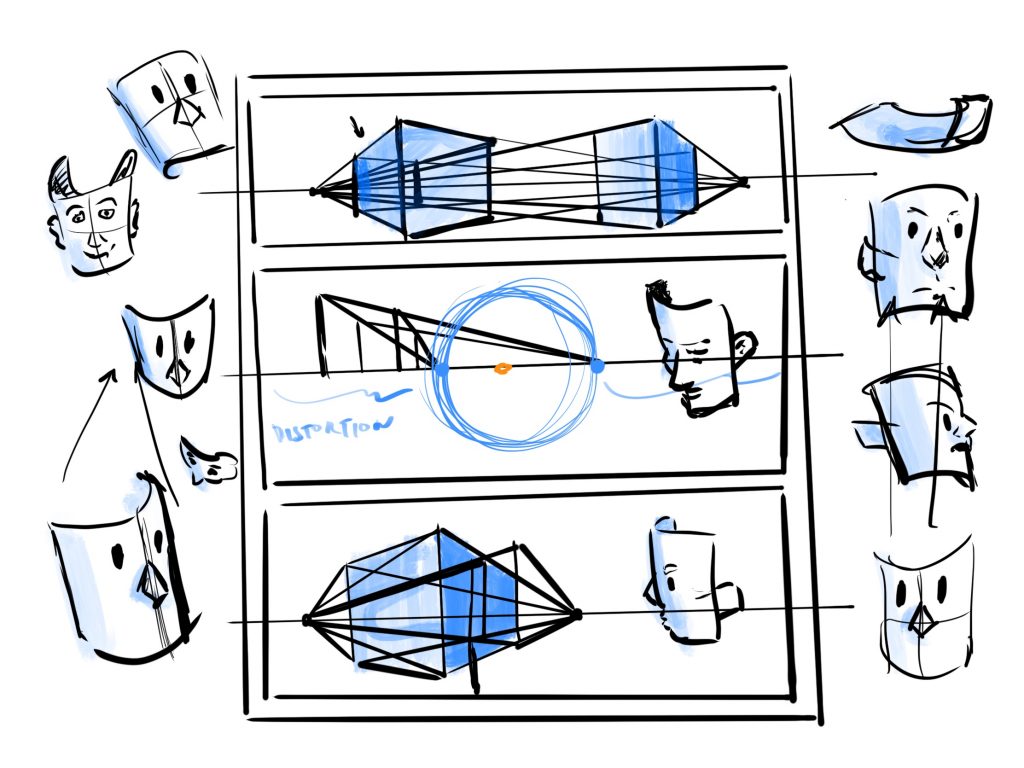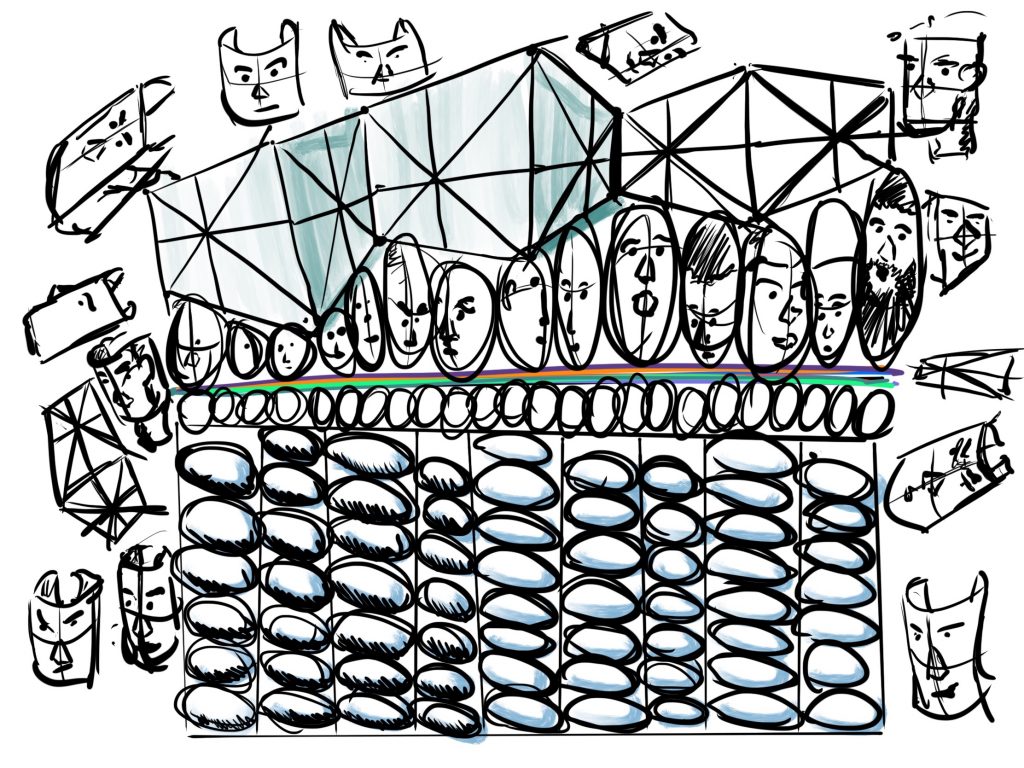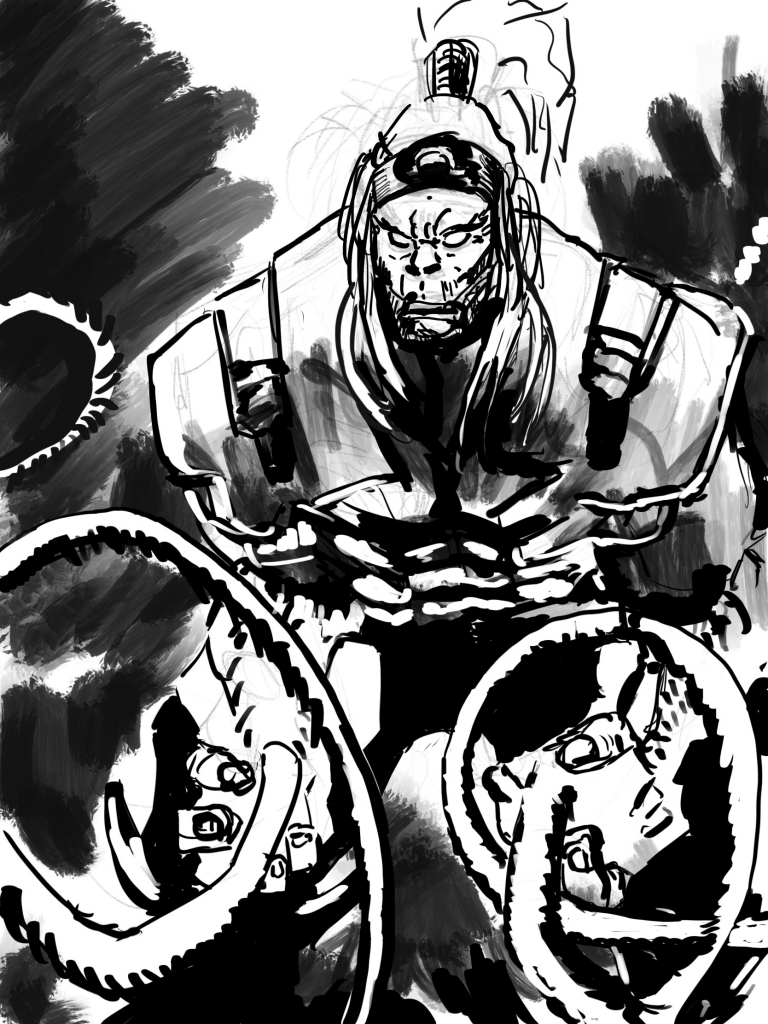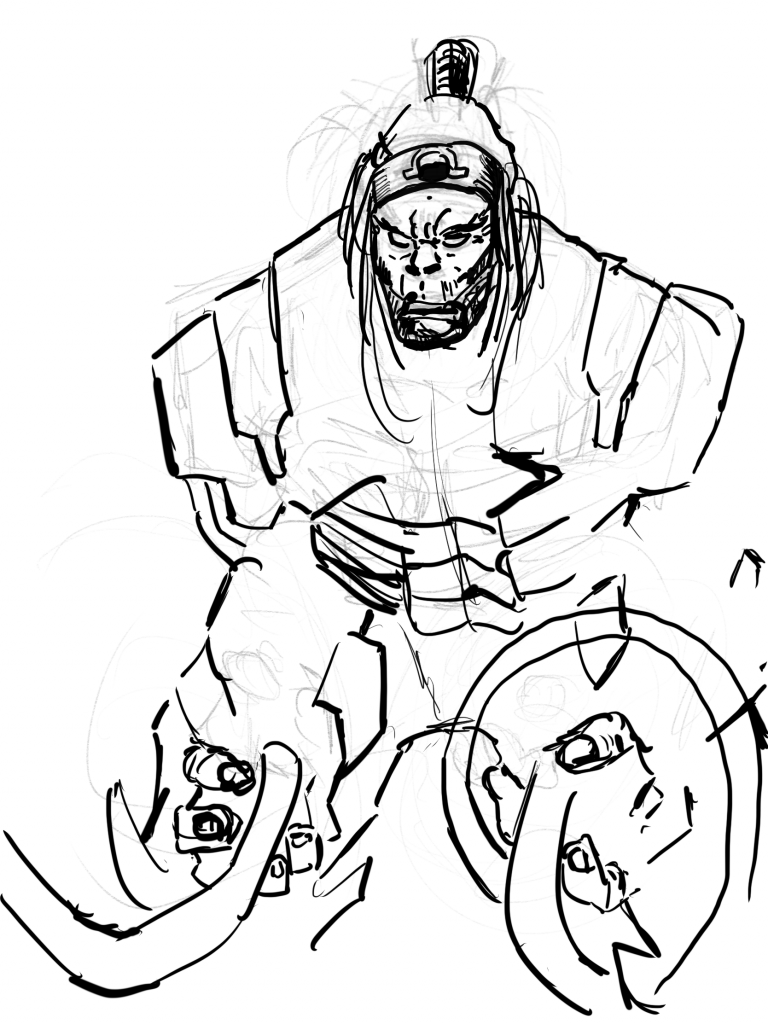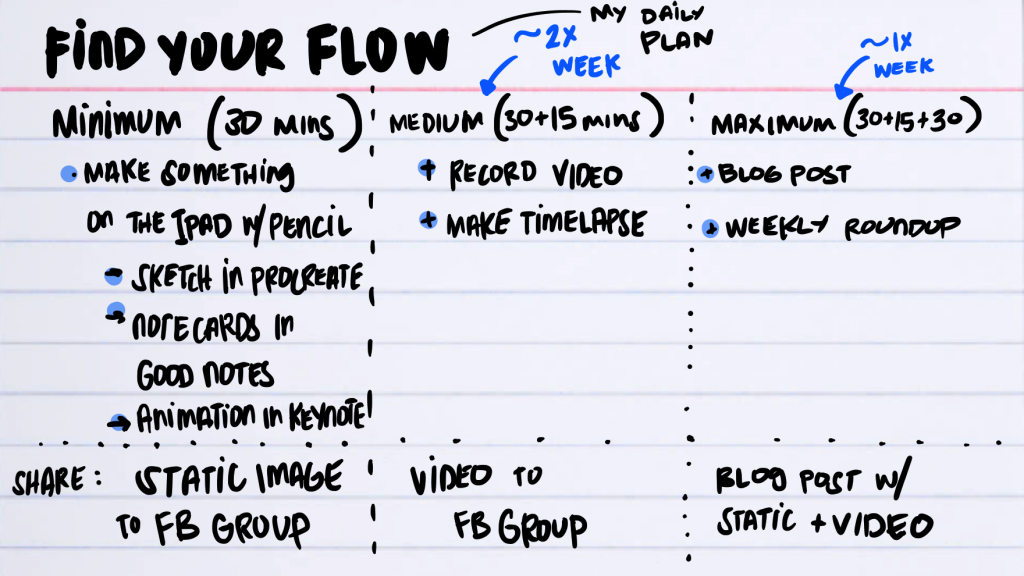Today I continued with Draw a Box lesson 1. I will now draw a box.
When you look for drawing lessons you’ll pretty quickly see 2-point perspective mentioned. If you play around in Procreate you’ll see the perspective setting.
And if you’re like me, you think you’ll never ever touch it.
After today’s exercise, I have a basic understanding of how perspective guides might work. In any case, today’s lesson was to set up perspective points, connect dots, and build boxes.
And more and more boxes.
I drew some faces around the page to practice making a face look in the direction I want it to look. Mostly just following Sinix Design’s “Drawing Faces From Any Angle”.
And then I spent too much time chopping up the Procreate time lapse to make this animated grid.
Anyway, that’s that for today.
I’m starting to see the value in documenting the learning process. If I stick this out through the 30 days (which I’m pretty sure I’ll do) that will be a lot worth sharing.
If I stick it out for 30 weeks that’d be even more worth sharing. I’m less sure I’d stick it out that long but hey, one day at a time.
